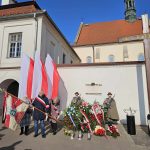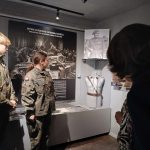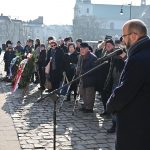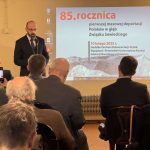85th anniversary of the first mass deportation of Polish citizens deep into the Soviet Union
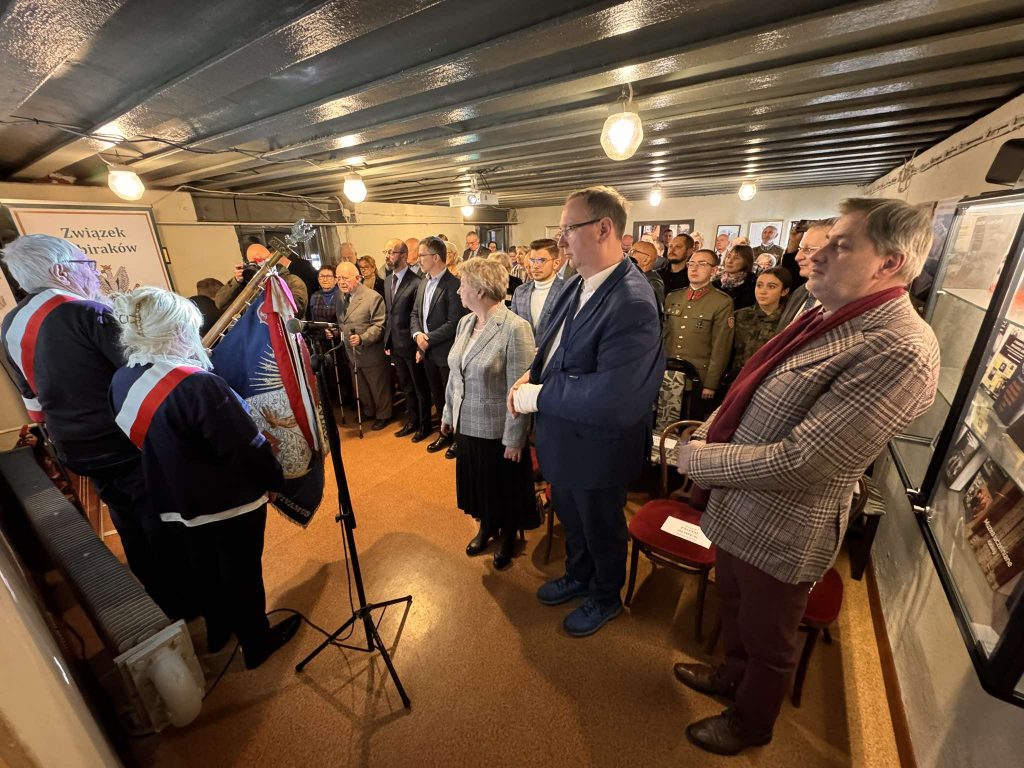
The 85th anniversary of the first mass deportation of Polish citizens deep into the Soviet Union – February 10, 2025.
On February 10, 2025, at 12:00, at the headquarters of the Documentation Center of Deportations, Expulsions and Displacements of the University of the National Education Commission in Krakow, Fort No. 52 and 1/2N “Skotniki”, a ceremony was held to commemorate the victims of Soviet crimes on the 85th anniversary of the first mass deportation of Polish citizens deep into the Soviet Union. At the same time, the meeting was dedicated to the celebration of the 80th anniversary of the end of the Italian campaign of the Second Polish Corps. It was attended by witnesses to history – Sybiraks and veterans representing branches of the Sybiraks Union from Krakow, Katowice, Częstochowa and Łomża, representatives of state, scientific, cultural and social institutions. Earlier, flowers and candles were laid at the plaque of the Deportees of Siberia at pl. Fr. A. Studziński with military assistance.
During the event, the Center hosted the opening of a permanent exhibition entitled. “On the Trail of the Second Polish Corps and in Refugee Settlements – Exiled to Siberia. The fate of Polish citizens deported deep into the Soviet Union during World War II”. This is the only exhibition of its kind in Poland fully dedicated to the “Route of Hope.” It was prepared as part of the “Excellence Initiative – Research University” program, implemented by the University of the National Education Commission in Cracow. The exhibition was officially opened by Prof. Michal Rogoz, Vice-Rector for Science at UKEN in Krakow, Joanna Florkiewicz-Kamieniarczyk, director of the Department for the Revitalization of Krakow Monuments and National Heritage at the Malopolska Voivodship Office, and Danuta Sedlak of the Katowice Branch of the Sybiraks’ Association.
The day also saw the premiere of a film produced by the Center entitled “Don’t let yourself be killed… Siberians in the Second Polish Corps.”
Between 1940 and 1941, hundreds of thousands of Polish citizens were sent deep into the Soviet Union during four mass deportations organized by the NKVD. Hunger, freezing temperatures, hard labor, fear, humiliation, death of loved ones – were their daily reality. After the outbreak of war between Germany and the USSR, the Sikorski-Mayski Agreement was signed in 1941. Polish deportees were granted amnesty. Men and young boys joined the Polish army forming in the south of the USSR under the command of General Władysław Anders. The soldiers went to Iran and then further afield. After training in the Middle East, they went to the Italian front. As part of the 2nd Polish Corps under General Wladyslaw Anders, they took part in the battles for Monte Cassino, Ancona and Bologna. Among other things, the open exhibition presents, for the first time, unique artifacts from the legacies of Gen. Anders’ closest associates – Gen. Zygmunt Bohusz-Szyszko, the last commander of the 2nd Polish Corps (conqueror of Bologna) and Major Melik Somchjancu (the highest-ranking Armenian in the Polish Army in Italy), who during the Battle of Monte Cassino was deputy commander and later commander of the 4th Carpathian Rifle Battalion. Among the most interesting exhibits were the military belt, hems – patches of a certified officer and epaulettes from the uniform of Major General Zygmunt Bogusz Szyszko, donated to the Center’s collection by the general’s daughter Elizabeth Eaton, currently living in South Africa. Similarly, mementos of Major Melik Somchjanc (military documents, decorations, photographs with General Anders on the ruins of Monte Cassino, etc.) donated by daughter-in-law Zofia Piskorz-Somchjanc, who lived in the UK until her death.
Along with the Polish army, a part of the civilian population (about 40,000) also left the Soviet Union in 1942, which, on the basis of Polish-British agreements, was deployed in settlements in Africa, India, Mexico and New Zealand. In these places Polish schools at all levels, scouting, Polish social organizations, craftsmen’s establishments began to function, Polish newspapers were published, even cinemas and theaters functioned. This is a little-known page of Polish history. After the end of the war and the liquidation of these Polish settlements (often in exotic and very remote places), Poles decided to live in exile. They settled permanently in the USA, Canada, Great Britain or Australia. The exhibition also tells the story of this part of the history of the Polish nation, presenting the contemporary life of the Polish Siberian diaspora and Polish memorials abroad, including Siberian necropolises.
The event was organized by the Governor of Malopolska, the Institute of National Remembrance Branch in Cracow, the Rector of the University of the Commission of National Education in Cracow, the Board of Directors of the Sybiraks’ Association Branch in Cracow, and the Documentation Center of Displaced Persons, Expulsions and Resettlements UKEN in Cracow.
Thanks to the Student Scientific Circle of the Institute of History and Archival Studies at UKEN in Cracow for their assistance during the event.





